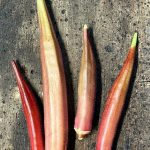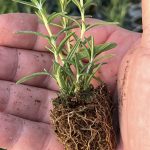Tomato, Parks Whopper
Price range: $1.99 through $7.99
Discount per quantity
| Quantity | 3 - 8 | 9 - 14 | 15+ |
|---|---|---|---|
| Price | Price range: $1.93 through $7.75 | Price range: $1.87 through $7.51 | Price range: $1.79 through $7.19 |
| % Discount | 3% | 6% | 10% |
Description
Tomato, Parks Whopper
The Parks Whopper tomato is a classic hybrid variety that has earned a loyal following among home gardeners and market growers for decades. Known for its large, meaty fruit and dependable yields, it’s an excellent choice for those who want a big slicing tomato with outstanding flavor.
Overview
-
Type: Indeterminate hybrid
-
Days to Maturity: 70–75 days
-
Fruit Size: 12–16 oz (can reach up to 1 lb)
-
Shape & Color: Round, bright red
-
Growth Habit: Vigorous vines, continuous production
-
Use: Fresh eating, slicing, salads, sandwiches
Appearance and Flavor
Parks Whopper tomatoes are notable for their impressive size and uniform shape. Each fruit is smooth-skinned, bright red, and full of firm, juicy flesh. The flavor is well-balanced — rich and sweet with a slight tang — making it ideal for sandwiches, burgers, or fresh salads.
Growing Details
Planting:
-
Start seeds indoors 6–8 weeks before the last frost date.
-
Transplant after danger of frost has passed and soil is warm.
Spacing & Support:
-
Space plants 24–36 inches apart in rows or garden beds.
-
Provide strong cages or stakes; vines grow tall and heavy with fruit.
Sun & Soil Needs:
-
Full sun (6+ hours daily)
-
Well-draining, nutrient-rich soil with pH 6.0–6.8
Watering & Feeding:
-
Maintain consistent soil moisture; deep water weekly.
-
Fertilize regularly with balanced tomato fertilizer or compost tea.
Disease Resistance
This hybrid is bred for strong resistance to common tomato problems, including:
-
Fusarium wilt (F)
-
Verticillium wilt (V)
-
Nematodes (N)
This makes it a reliable performer even in challenging garden conditions.
Harvesting
Fruits are ready to harvest when fully red and slightly soft to the touch. Parks Whopper continues to set fruit throughout the season, providing an extended harvest window.
Uses in the Kitchen
The sheer size and juicy texture of this tomato make it a favorite for slicing. Enjoy it fresh on sandwiches, diced into salads, or layered on burgers. It also holds up well for canning and freezing due to its firm flesh and minimal seeds.
Additional information
| Weight | N/A |
|---|---|
| Options | Seed 10 count, 3.5 in. (12.3 fl. oz.) Pot |





